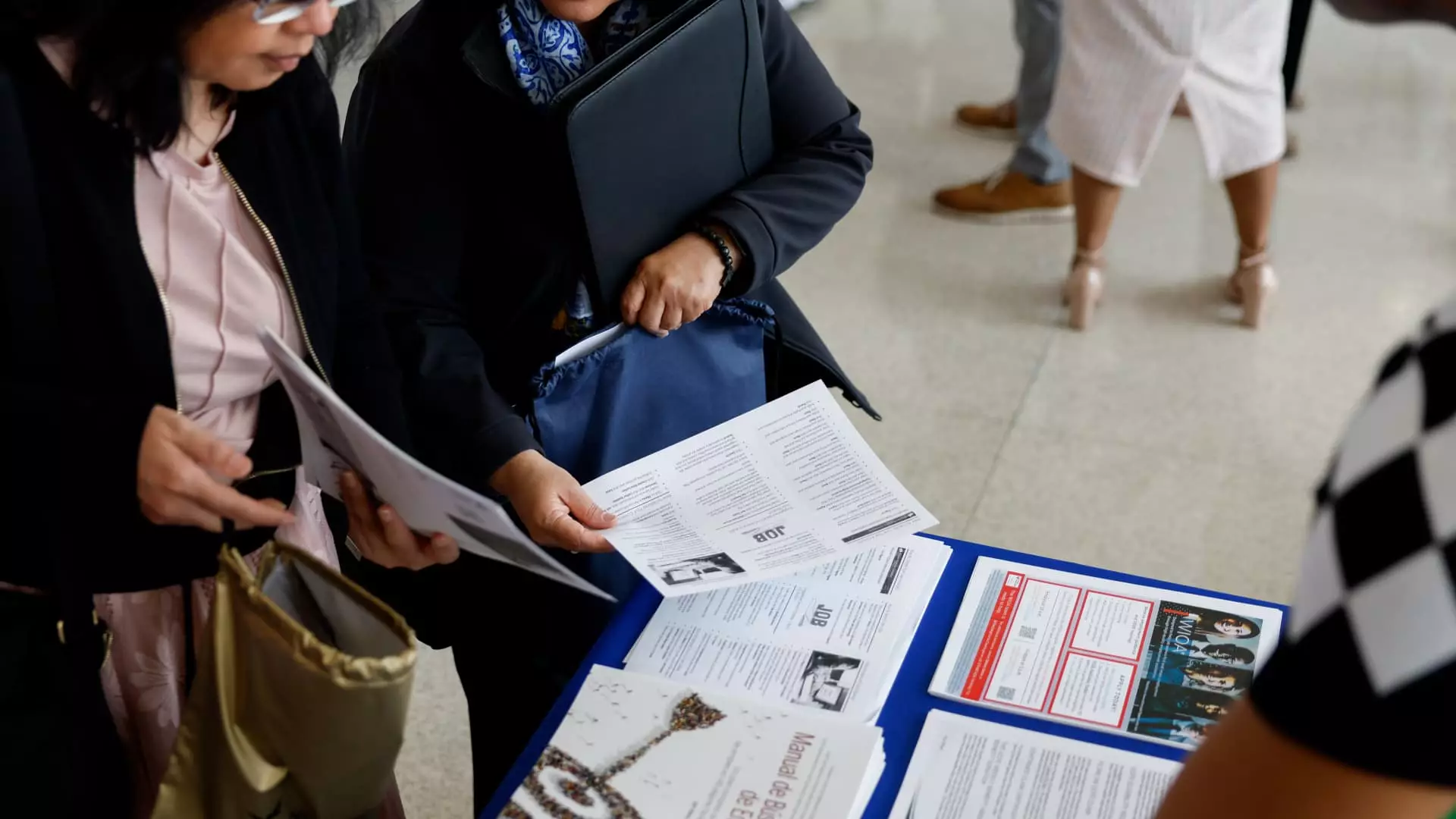In today’s employment landscape, job seekers find themselves grappling with an unexpected contradiction. The labor market may appear robust at first glance, characterized by a consistently low unemployment rate and a seemingly steady stream of job growth; yet, for many, the reality of securing new employment has become increasingly elusive. As of recent reports, the unemployment rate stands at a mere 4.2%, while businesses are hiring at the slowest rates seen since 2014. Economists highlight the troubling trend of long-term unemployment, with a staggering 23.5% of jobless workers finding themselves out of work for over six months. This turbulence creates a stark divide between the employed and unemployed, leaving many confused and frustrated as they navigate a landscape that feels simultaneously full of opportunity and dauntingly closed off.
Understanding the Shift: Economic Headwinds at Play
Several economic factors contribute to this paradox. With declining consumer confidence and increased trade tensions creating headwinds against businesses, the need for a strategic approach to job hunting has never been more essential. Employment experts assert that the environment has shifted toward a “low firing, low hiring” landscape, meaning that companies are cautious about making new hires while simultaneously retaining their existing staff. It’s a tricky balance, a dance between being prudent with budgetary resources and the need to expand their workforce in a competitive economy. For job seekers, this reality means that traditional methods of searching for jobs are no longer sufficient in the face of such formidable odds.
The Power of Networking: Beyond Conventional Channels
In a climate where direct applications yield diminishing returns, it’s critical for job-seekers to embrace innovative forms of networking. According to career experts, building personal relationships and leveraging internal referrals are proving to be more effective than simply hoping for a call back from an online application. Networking is not just about attending job fairs or connecting on LinkedIn; it requires a more strategic and creative approach. For example, attending niche conferences, seminars, or even book signings where industry leaders congregate can create opportunities for organic conversations and connections that are more impactful than traditional networking venues.
Mandi Woodruff-Santos, a career coach, emphasizes the importance of proactively positioning oneself in the right circles. Engaging with thought leaders and peers in informal settings allows job seekers to showcase their personalities and skills in authentic ways, establishing rapport that might not surface in a more formal environment.
Rekindling Old Connections: Tapping into Existing Networks
Job seekers need to remember the value of their previous professional connections. Reconnecting with former colleagues can open doors to hidden opportunities within organizations—especially when those roles have yet to be advertised to the wider public. Frances Weir, a principal at Korn Ferry, suggests that many positions may be more accessible than they appear; often, they lie “further underground,” requiring a proactive approach to uncover.
However, job seekers must approach this tactfully. Applying for numerous positions within the same company can raise red flags; it’s better to identify suitable roles and demonstrate genuine interest in a few targeted areas. Personalized outreach can make all the difference. Old connections can become fresh advocates if they understand what the job seeker is aiming for.
Crafting a Standout Application: The Art of Tailoring
In the face of a competitive market, generic resumes are unlikely to help candidates make meaningful impressions. Career experts recommend that job seekers take the time to tailor their resumes and cover letters for each position—a crucial step in aligning their qualifications with the specific needs of potential employers. Utilizing keywords from job descriptions and emphasizing proven achievements rather than merely listing responsibilities can showcase the applicant’s capability to deliver results.
Employers are increasingly looking for candidates who demonstrate initiative, especially during slower job markets. Highlighting relevant courses, certifications, or any personal development undertaken during periods of unemployment can signal determination and a proactive mindset.
Embracing Flexibility: Standing Still is Not an Option
Finally, job seekers should remain open to exploring flexible work arrangements or contract roles while they search for their ideal full-time position. Jennifer Herrity underscores the potential of short-term opportunities, which can serve not only as a bridge to full-time employment but as valuable experiences that further expand one’s network and skill set. This willingness to adapt can endow candidates with a much-needed edge in a marketplace characterized by uncertainty.
The job hunting landscape can be daunting, but with the right mindset and strategies, job seekers can turn challenges into opportunities, transforming the paradox of a strong job market into a pathway toward success.

